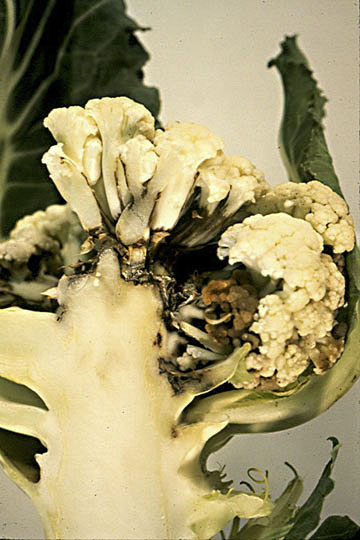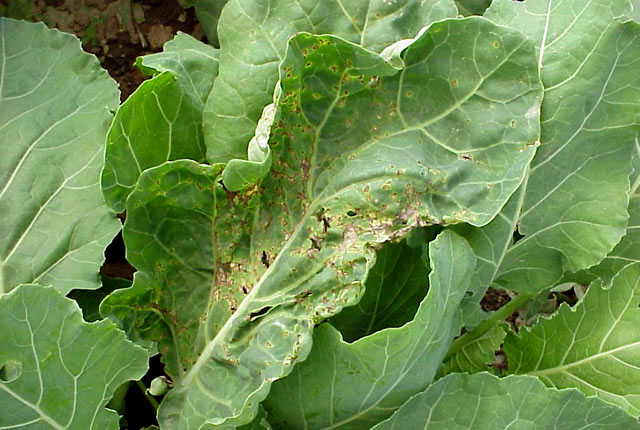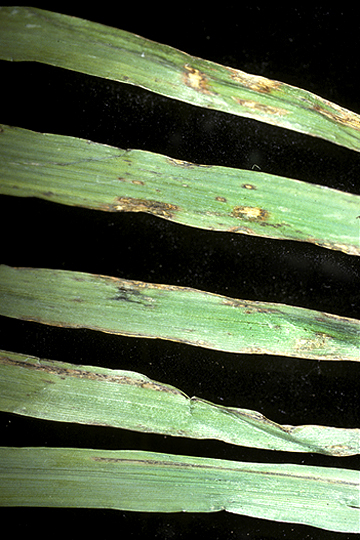DISEASE: Bacterial leaf spot (Head rot)
HOST: Cauliflower
Leaves with tiny lesions surrounded by large halos.

Bacterial leaf spot (Head rot) | Cauliflower
DISEASE: Bacterial leaf spot (Head rot)
HOST: Cauliflower (Brassica oleracea var. botrytis)
PATHOGEN: Pseudomonas syringae pv. maculicola
SOURCE: R. Campbell
DISEASE: Bacterial leaf spot (Head rot)
HOST: Cauliflower
Section of a cauliflower head with discolored, infected tissues.

Bacterial leaf spot (Head rot) | Cauliflower
DISEASE: Bacterial leaf spot (Head rot)
HOST: Cauliflower (Brassica oleracea var. botrytis)
PATHOGEN: Pseudomonas syringae pv. maculicola
SOURCE: R. Campbell
DISEASE: Bacterial leaf spot
HOST: Collard
Leaf with several kinds of spots. Small necrotic lesions with yellow halos, brown lesions, and large, brown necrotic areas caused by coalescing of lesions.

Bacterial leaf spot | Collard
DISEASE: Bacterial leaf spot
HOST: Collard (Brassica oleracea var. acephala)
PATHOGEN: Pseudomonas syringae pv. maculicola
SOURCE: S. Miller
DISEASE: Bacterial leaf spot
HOST: Radish
Leaf with brown lesions, some with a water-soaked appearance.

Bacterial leaf spot | Radish
DISEASE: Bacterial leaf spot
HOST: Radish (Raphanus sativus var. longipinnatus)
PATHOGEN: Pseudomonas syringae pv. maculicola
SOURCE: J. Togashi, M. Goto
DISEASE: Bacterial pustule
HOST: Soybean
Early symptoms are minute, pale green spots on young leaves. Later, small pustules form in the center of spots, best observed on underside of leaves. Spots vary in size and darken with age and lesions coalesce. Dead areas are torn away by wind.

Bacterial pustule | Soybean
DISEASE: Bacterial pustule
HOST: Soybean (Glycine max)
PATHOGEN: Xanthomonas axonopodis pv. glycines
PATHOGEN SYNONYM: Xanthomonas campestris pv. glycines
SOURCE: APS
DISEASE: Bacterial stripe (Blight)
HOST: Oat
Leaves with irregular necrotic spots and elongated stripes that are light tan in the center. Symptoms begin as water-soaked lesions.

Bacterial stripe (Blight) | Oat
DISEASE: Bacterial stripe (Blight)
HOST: Oat (Avena sativa)
PATHOGEN: Pseudomonas syringae pv. striafaciens
SOURCE: S. Thomson







